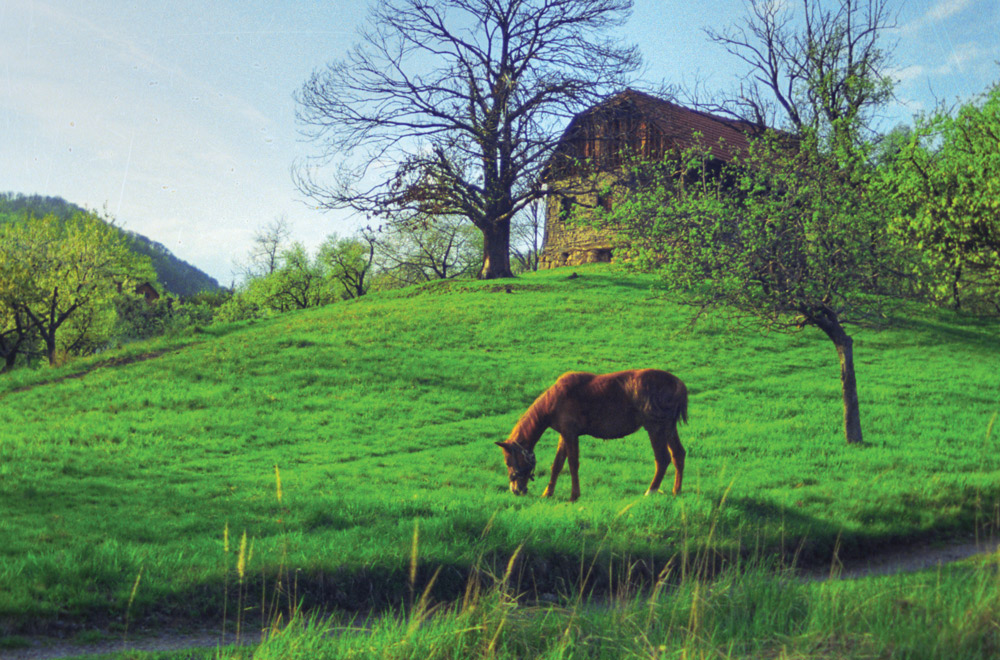Deciphering the correct balance between calcium and phosphorous doesn’t have to feel like a bad math class flashback!
As we start this discussion of the proper ratio of calcium to phosphorus in your horse’s body and food, let’s agree to keep things as simple as possible. We can understand how the minerals work and how much our horses should be consuming without having to tackle any complicated math!
What these minerals do for the body
Calcium and phosphorus, like all the essential minerals, provide nutrients that assist our bodies in functioning properly. Think about them like oil in your car. If your oil level is too low or too high, the engine doesn’t work properly. Likewise, if you don’t have minerals in your body, it won’t work well. Calcium This is the most abundant mineral in the body. It’s found mostly in the bones and teeth – it is needed by the body for healthy outer layers of bone. It’s essential for the heart to function and for normal blood clotting. For obvious reasons, it’s critical in pregnancy and lactation. The body also needs calcium to facilitate appropriate nerve conduction, muscle contraction, temperature regulation and glandular activity.
If the body doesn’t have adequate calcium, the following issues may arise:
• Muscle cramps
• Numbness in the arms or legs
• Porous or fragile bones (most often in the horse’s jaw – you may see loose teeth as a result)
• Joint pain
• Tooth decay
• Nervousness
• Depression or irritability Phosphorous This is the second most abundant mineral in the body. Phosphorous is required to metabolize calcium properly and is regulated in the body by the parathyroid glands. It is also critical for the construction of bones and teeth – it’s used to build the inner structure of bones.
Phosphorus assists in synthesizing lecithin and cerebrin, which are needed by the brain. It stimulates hair growth and maintains bone density. It also functions as a pH buffer in the body, preventing the blood from becoming too acidic or alkaline. It plays a role in how the body stores and uses energy and helps reduce muscle pain after a hard workout.
Inadequate phosphorus levels in the body can result in:
• Arthritis
• Loss of appetite
• Joint stiffness
• Fragile bones or bone pain
• Fatigue and weakness
• Anxiety
• Irritability
• Decreased bone and tooth development in foals
Why is the ratio important?
Life is all about balance. And optimal health is all about balancing nutrition, exercise and emotional happiness.
Calcium maintains balance between sodium, potassium and magnesium in the body. And it’s essential for the proper utilization of phosphorus and vitamins A, C and D. Phosphorus helps balance iodine, magnesium and zinc, as well as vitamin D.
In addition, for every gram of phosphorus that enters the small intestine, the body requires one gram of calcium to accompany it before the phosphorus can be effectively absorbed. If there isn’t enough calcium in the horse’s food to “match up” with the phosphorus being consumed, the body will use calcium from elsewhere – most likely by demineralizing the bones. So you can see that calcium and phosphorus are married to each other – they depend on one another for proper balance in the body.
For horses, most experts recommend a ratio of 1.1 to 2.5 parts calcium to one part phosphorus. This is written as 1.1:1 to 2.5:1 calcium to phosphorus. Mature horses can get by with the lower end of 1.1 to 2.0 parts calcium to one part phosphorus. It makes sense that they don’t need as much calcium over the one part required for phosphorus utilization since they are no longer growing bones and teeth. Younger horses and pregnant or lactating mares require the 2.0 to 2.5 parts calcium.
Be aware that your horse can consume too much calcium as well. Excessive calcium interferes with the body’s ability to absorb other minerals like magnesium, copper, zinc and iron. In addition, the body will have to work to eliminate the excess calcium via the kidneys, which can result in additional health issues and stress on these vital organs.
A ratio higher than 2.5:1 calcium/phosphorous can produce the following:
• Poor hoof and hair quality
• Sore back
• Soft tissue injuries (e.g., suspensory tears and bowed tendons)
• Decreased reproductive ability
• Over-calcification of joints
• Kidney stones
How do you know if your feeding program is balanced?
The majority of your horse’s food should be in the form of forage – grass hay or pasture. It’s wise to have your hay tested to determine what the ratio of calcium to phosphorus is. Be aware that alfalfa typically has a ratio of 5:1 or higher – that’s way too much calcium for horses. Most grass hays have higher calcium than phosphorus without having too much calcium, so they are the forage of choice. Also be careful using high phosphate fertilizers on your pastures, as that can throw off the balance of minerals in your horse’s grazing ration.
Carefully read labels on any grain products you feed your horse. You will have to do a little math, but just be sure that the feed contains about twice as much calcium as phosphorus. Many processed feeds have too much phosphorus – remember if there is too much phosphorus, the body will begin to de-mineralize the bones to compensate, resulting in long-term health issues and a risk for skeletal problems. Grains, wheat bran and rice bran are all very high in phosphorus and should only be fed at low levels, if at all.
Free choice minerals
I offer my horses an assortment of free choice minerals so they can balance their own bodies. It’s amazing to see what they tend to eat during different seasons when they’re eating more hay versus pasture. And they will often dip into one of the minerals when we get a new shipment of hay – they have to balance their calcium/ phosphorus ratio to accommodate the changes in mineral levels in the feed.
Finally, be aware that some chemical wormers are high in phosphates, specifically some of the boticides. This will impact how much calcium is required by the body to compensate. Once again, offering free choice minerals can help the horse maintain an appropriate mineral balance.
And there you have it! You’ve survived what you thought would be a painful discussion of complicated math! Just remember that your horse needs balance in his life – and it’s up to you as his steward to help him achieve it.








